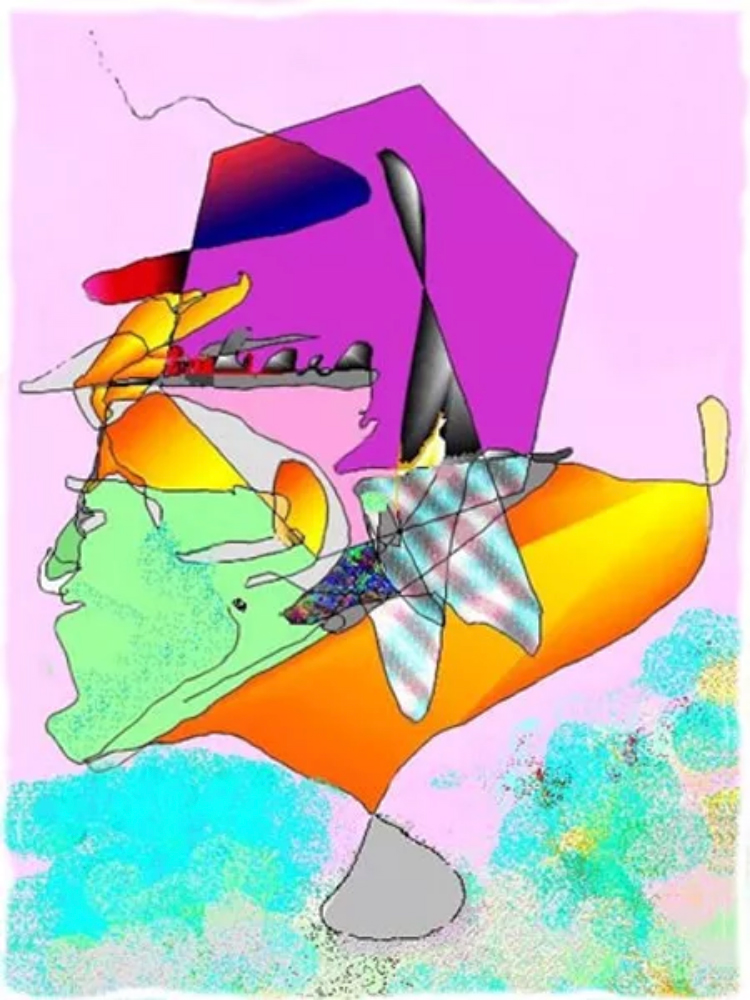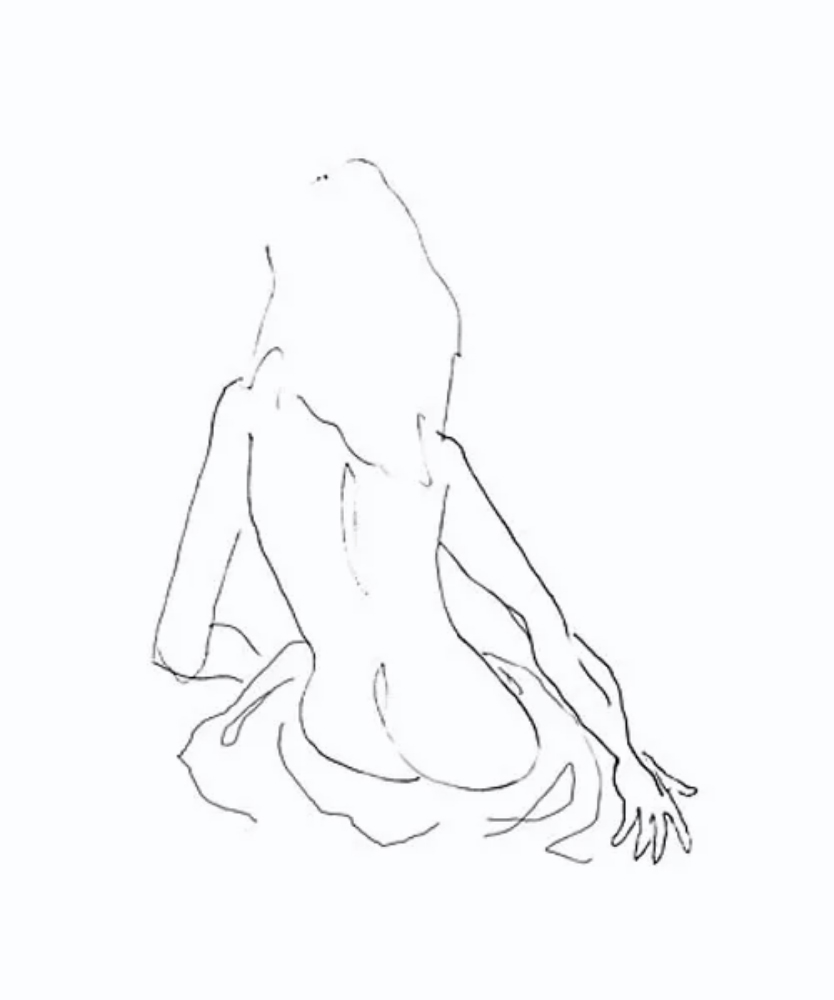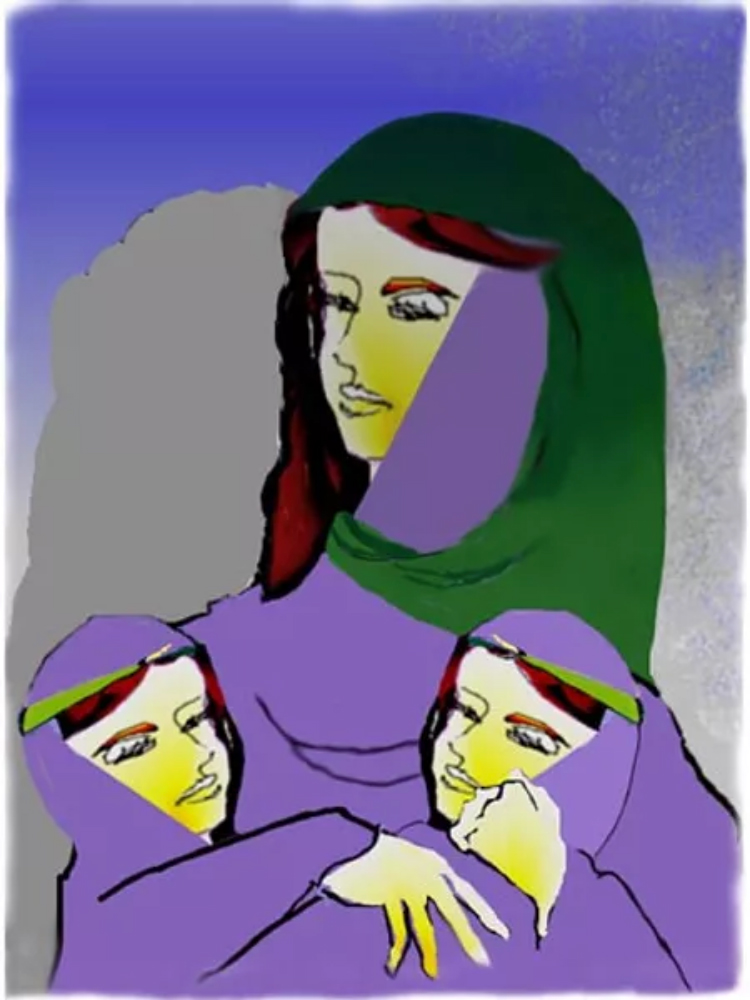Art



In his own words...
I was fascinated by Auguste Rodin’s work, and tried to pattern my approach after him. I think he’s my hero, along with Thomas Jefferson and Beethoven. I went for those guys because they broke the mold, like Bob Dylan and John Lennon, two more of my heroes. And then of course there’s Einstein.
I was pretty sure I was going to make sculpture my life’s work, but thinking about it I realized I’d be stuck in a room with a cold, north light and a big piece of rock and maybe a pretty model, and considering how hard Art was to make a living at, I decided to write operas instead. I figured that was a clear field. American operas are rare. And I’d be surrounded by singers, dancers and musicians, and I’d get to drink champagne and wear tuxedos and hang out with Leonard Bernstein.
So I enrolled in San Francisco State College, studying music theory and composition. I didn’t do well, there. I’m not made for classrooms. All I’d do in class was pretend to take notes. Actually, I was drawing. I dropped out of college and moved to Berkeley. There was some interesting action there, as it was about the time of the free speech riots. I lived rent-free in the basement of a guy who was running for mayor on the Socialist ticket. I bought a book called “How to Draw and Paint” and did everything it said: stretched my own canvases, sized them, did all the exercises it recommended. Painting in a basement doesn’t work very well, though. When I took the paintings outside, they’ looked completely different. So, I moved into the top floor of a duplex on Milvia Street, which, by the way happened to be facing in the backyard the guest house where Jack Kerouac had written “On The Road”, which I’d just finished reading. I took a part time job racking balls at a pool parlor so I could afford to pay the rent.
In the tenth grade I drew a comic strip for the school paper. And I kept on sculpting, too. I’d carry a ball of plasteline with me wherever I went. I’d take it out and do something with it whenever there was nothing happening, such as when I was waiting for the principal to give me detention. I was always in trouble.
Another problem I had to overcome was the fact that I’m slightly color blind: Faces would tend to be green, and I wouldn’t know it. I solved that by never using green paint out of a tube. If I wanted to paint a tree, I’d make the green myself.
I’ve always had an especially hard time with everything I’ve tried to do. I wanted to be a musician, but I don’t have a particularly good ear. I’ve managed to become a pretty great piano player, though, and I’m not the only one who thinks so. I do okay with the guitar; and I write good songs. I became an outstanding athlete even though I was one of those original ninety-eight pound weaklings to begin with. I’ve made it pretty big as an actor in spite of being terminally shy. I’ve always envied my brother Keith, who can do just about anything without trying very hard. Invariably, I had huge obstacles to overcome in anything I tried. Had to work against my genes to achieve my dreams.
Anyway, I produced fifty-two oil paintings during that period. Taking a page from Uncle Will and my own libido, which has always been over-active, I painted mostly partially draped nudes. by the time I got to the fortieth or so, I was doing pretty good. None of those paintings are extant, except maybe the little one that I sold for $50. All the others were stored for years in my father-in-law’s garage, but by the time, years later, when I tried to track them down, they had disappeared. All of my early sculptures are gone, too, except for one figure I did when I was seventeen, which my mother had saved. It’s not one of my best.
I moved back to San Francisco, and found Jack’s Beatniks, what was left of them. A year or two later, the scene in North Beach had gone flat, the few vestiges of it having moved underground in the Portrero District, which later grew into the Haight-Ashbury. I hitchhiked down to Venice, California, and lived hand to mouth with the that hung on down there; the “Holy Barbarians” as we were called.
I hitchhiked to New York, where I started to make money as an actor. I was living on unemployment insurance in a furnished room on Central Park West, painting and looking for acting jobs, when I got drafted.
I spent two years in the Army, mostly in Fort Eustice, Virginia. There wasn’t any war to go to. 1960. Korea was over and Vietnam was just a distant brush fire. I worked in ‘Training Aids’ as an illustrator, drawing pictures of helicopters, maps, charts, etc. Artists don’t join The Military. The Army can train a draftsman, but they can’t train an artist. They have to use civilians for those jobs at high pay. So, if they find a draftee who can draw, they snap him up, for $75 a month plus room and board.
I created a cartoon series for some of the dull classes. It featured a buck Private, modeled after me, a beautiful blonde, modeled after Marilyn Monroe and a mean Sergeant, modeled after my mean Sergeant. I also started a theater company, and we toured around the Army Posts on the East Coast with musical comedies. I designed the posters, and some of the sets and costumes.
After I got out of the Army, I went back to New York, where I got a job with an Art Agency. I quit it when I got my first acting gig, a production of Hamlet in a Mall in New Jersey. A year later, I was starring on Broadway.
After that, I rarely picked up a brush again. I always had my paints with me, but my mind was on my acting career. I briefly got it going again when I did a mini-series on the life of Gaugin. I had a marvelous opportunity there. A Parisian artist produced several copies of Gaugin’s stuff for us. If he had signed them, they’d be considered excellent forgeries. Some of them were done as unfinished, and I was supposed to work on them in the movie. The result of that was I learned how to paint like Gaugin. I think that stuck with me. I’d always thought I was mainly a cartoonist, not a fine artist.
All this time I was still painting. I did a few murals in bars and hotel lobbies, and hung a couple of my paintings in The Gashouse on Ocean Front Walk: partially draped nudes, of course.
Then, in the fall of 1996, I discovered the graphics program in my Apple computer. I started drawing, using the track pad on my laptop. At first the stuff looked like a four year-old’s doodles, or as though I was drawing with my left hand, or was dead drunk; but in a few days I got it together. A week later, it looked just like my pencil drawings, and after awhile, just like my oils. In a way, it’s a more direct technique than painting with a brush. I’m doing it with my index finger. No tool between me and the painting. Straight from my brain and down my arm to the “canvas”. I miss the smell of turpentine, though.



But, now I could get back into my art. I paint mostly in the wee, small hours. You don’t need sunlight to paint on a computer and I don’t sleep very well at night. Also, there are no distractions late at night. Phones don’t ring at 2 A.M. There are no meetings. Kids aren’t asking me to glue toys back together. Doorbells don’t ring.
I use a combination of AppleWorks and a simple program called Adobe PhotoDeluxe. They each have something I want. I stick with them because everything has to be done manually. There are very few special buttons you can push to do things for you automatically. I like that. It’s just me. People can hardly believe I can do what I do with these programs. Every once in awhile, someone will try to talk me into the real PhotoShop or Adobe Illustrator or something, but then, when they look at my stuff, they admit that I don’t need it.
Some people call me an inventor. Well, I don’t know about that. There are a lot of people out there with Apples.
I started getting interest from art dealers and museum people three or four years ago, but I didn’t feel I was ready. Last year, when I started casting around for a way to get the stuff out of the computer and onto canvas, I found,––through my old friend from the Beatnik days, Michael Bowen, known as pretty much the greatest of the unregenerated Beatnik artists from San Francisco––a fellow named Jim Costello, who made giclés for a living, a kindred spirit, covered with tattoos, like myself, and totally hip to my work. I started running tests and transferring my computer art to canvas., all the time having no idea where I was going to take them. I’d lost the cards and numbers of those interested Art Dealers long ago.
Then, at a gallery showing of my son’s paintings (he’s pretty good, amazing, actually, in a kind of punk underground way) I ran into an old friend from my distant past: a painter named Salvatore Monteleone. He decided to mentor me, even though he hadn’t seen my work. I packed a few canvases into my car and drove them down to Mirabel’s on the Sunset Strip, one of my favorite restaurants.
I realized, though, that it was how Gaugin painted. He’d draw a cartoon, a thick black line, and fill in the colors. He himself called it a cartoon. That gave me hope. I still didn’t paint much, though. Never had the time or enough room to set it all up. My days were full, and you need daylight to paint. I never stopped drawing, though, on napkins, scratchpads, even on newspapers with magic markers. The background of the newsprint made an interesting effect
In the Army, they classified me as an Impressionist-Expressionist. They actually had that as an M.O.S. (Military Occupational Specialty) listed in a big book, with a six-digit ID. number beside it. I don’t know. I think every one of my paintings is different. I don’t have a genre, or a set style that I know about. I don’t do cycles, or periods.
Occasionally, I’ll scan in a drawing I did in a sketch book, or on scrap paper. Then work on it in the computer. Sometimes, after I’ve produced the giclé, I might enhance it with oils, or pastels or maybe gold leaf. Or I might rework scenery from a photograph behind the subject. So, the paintings transcend time and space, going from analog sketches and photos to Cyberspace and back to the real world. Some of it was started in the twentieth century and finished in the twenty-first.
I was influenced by everybody. The Greeks, the Impressionists, the Fauvists. Picasso, Matisse, Klee, Ernst, Peter Max. Disney, R. Crumb, Frank Miller. Yeah. I’ve always been crazy about comics. I’m an omnivorous reader of those. Comics are cutting-edge. And I love Art Nouveau, mostly as it was reused during the hippy era, with its curlicues and beautiful impossibly long-haired women.
I once had the luck to spend an afternoon with De Kooning in his studio. That was a definite revelation.
I took up photography at one point. I had a brace of Pentax SLR’s, and I followed Rock Groups around the country. I graduated to a Leica and photographed my girl friends nude. I just recently got into the digital thing, using a Panasonic that has a Leica lens and a lot of pixels.
I set them around in the bar, on chairs, tables and the floor, and Salvatore, over a glass of Cognac, looked them over. He dug them, as it seemed, did the patrons of the bar. He helped me put together an exhibit in Beverly Hills with a charity hookup, and I was off and running, or at least walking very fast.
My Art is mostly representational. Sometimes. though, I get a little abstract, and once in a long while I paint something that has a certain amount of social significance, like “Commander-in-Chief,” a partly abstract representation of one of our Generals, unshaven and brutish, with a lot of explosive madness occupying his head.
But, really, I paint almost nothing but nude women, mostly without the partial drapery, but then, this is the twenty-first century. It’s time to strip off the pasties, isn’t it? I tend to make nipples look like flowers, and I’m particularly adept at faithful representations of what Anais Nin called “The Delta of Venus.”
I love color. Maybe because of my color blindness. When I say I’m a little color blind, I don’t mean I can’t see colors. We’re men, not dogs. “Color confused” would be a better description. I see lots of colors, brilliant, maybe more saturated than most people. I just don’t know what their names are. But, I’ve conquered that. And I always have my wife Annie to help me out.. I run everything by her. I don’t think I could do much all by myself in any of my areas of production: film making, writing, Art, Music. A successful man, I believe, needs a woman––not behind him––but beside him.
Right now, I’m contemplating a series of paintings with religious themes, though it won’t be very traditional. I’ve started out with a Madonna with two Messiah babies in her arms: identical twin girls! You might call it sacrilegious. But, my take on religion is it’s all right as long as you don’t take it religiously; though I’m a big fan of Jesus.
I still sculpt. My latest is a bronze bust of my fourth wife I call “The Farmer’s Daughter.” It’s been sitting in a foundry for several years. I’m waiting ’till I can see it as just a sculpture and not my ex-wife. Every once in a while, I go down there and change it a little. It keeps looking better. But, I don’t want it in my house, so I don’t know what to do with it anyway.